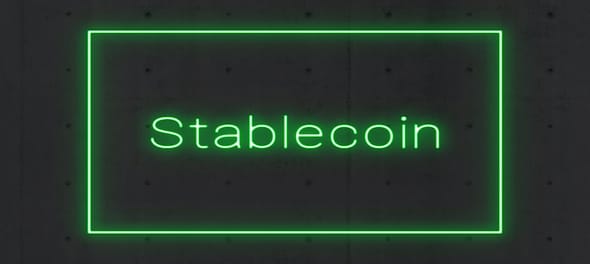
Cryptocurrencies have numerous advantages. They offer protection from inflation, quick transfer of value, tamper-proof record of transactions, and so on. However, one downside to these digital assets is their volatility. Wild price fluctuations can hinder their practicality as a mode of payment. Fortunately, this obstacle is easily overcome with stablecoins.
The value of a stablecoin is pegged to stable asset such as a fiat currency or precious metal. This ensures that their price remains more or less constant.
For instance, USD Coin (USDC) is a stablecoin pegged 1:1 to the US dollar. Therefore, 1 USDC is generally equal to $1. This constant valuation makes stablecoins better suited for buying, selling, and trading activities.
There are different kinds of stablecoins, and each maintains its valuation with the asset it tracks using varying techniques. In this article, we will discuss fractional stablecoins and how they work. However, to fully understand how these coins work, we must first look at the other two types of stablecoins, i.e., collateralised, and algorithmic stablecoins.
Collateralized stablecoins
These stablecoins are collateralized with the asset they are pegged to, usually in a 1:1 ratio. Therefore, if the stablecoin is pegged to the US dollar, there is an equal amount of USD in cash reserves for every token in circulation. If more coins are minted, the protocol adds an equal amount in fiat currency to the reserve. If the supply is burned, an equal amount of fiat currency is released from the reserves. This helps maintain the token’s $1 valuation.
Algorithmic stablecoins
Algorithmic stablecoins are not backed by a cash reserve. Instead, they are governed by an algorithm that keeps valuations in check. If the token's value goes above the pegged asset, the protocol mints more tokens to bring the price down. On the other hand, if the cost of the token drops, the algorithm burns tokens to bring the price back up.
Fractional stablecoin
Now that we understand how collateralized and algorithmic stablecoins work, we can begin to decode fractional stablecoins. Fractional stablecoins are a mix of both collateralised and algorithmic stablecoins. A fraction of the stablecoin’s circulation is backed by asset reserves, and the rest is controlled through an algorithm. Therefore, fractional stablecoins have a larger circulating supply of tokens than they do liquidity or collateral.
The good and bad of fractional stablecoins
Algorithmic stablecoins take time to grow and can experience extreme volatility. Also, once the price of the coin begins to tumble, regaining its peg is extremely difficult. And if the price crashes to $0, investors are left with nothing, as these coins were not back by any physical assets. A classic case in point would be TerraUSD (UST) which crashed and burned, leaving investors with nothing.
Fractional stablecoins offer some protection from such instances. Further, since the project does not have to lock up an equivalent of fiat or crypto, it frees up more cash for development purposes. The downside of fractional stablecoins is that speculation regarding their reserves can cause volatility during market turbulence. This can also apply to fully collateralized stablecoins; USDT lost its peg with the US dollar for months following speculation around its cash reserves during the TerraUSD meltdown.
An example of fractional stablecoins – FRAX
FRAX is an Ethereum-based protocol that marries algorithmic and collateralized design philosophies. It also uses a two-way peg of FRAX and its governance token, Frax Shares (FXS), to maintain its valuation.
If FRAX trades above $1, the protocol will decrease the collateral ratio and vice-versa. The protocol also depends on arbitrage traders to balance the demand and supply of FRAX in the open market.
For instance, if FRAX hits a valuation of $1.01, anyone can place $1 of value into the protocol and receive one newly minted FRAX. They can then sell this FRAX for $1.01 at a 1 percent gain. Similarly, if FRAX drops to $0.99, traders can purchase it from the open market and redeem it for $1 on the protocol, again capturing a 1 percent gain.
Of course, this is when FRAX is 100 percent collateralized. However, if it is 70 percent collateralized, the user will receive 70 cents and $0.30 worth of FXS upon redeeming 1 FRAX. On the other hand, if 1 FRAX is minted, FXS is burned to keep the ratio and valuation stable.
Also Read: Everything you need to know about USDC — Predicted to become the biggest stablecoin in 3 months
Check out our in-depth Market Coverage, Business News & get real-time Stock Market Updates on CNBC-TV18. Also, Watch our channels CNBC-TV18, CNBC Awaaz and CNBC Bajar Live on-the-go!


From Amethi to Mumbai South — Lok Sabha seats where parties are yet to announce candidates
Apr 30, 2024 6:39 PM
Diamond rings, fridge, TVs: Bhopal voters to get exciting prizes to boost turnout in Lok Sabha polls
Apr 30, 2024 6:35 PM
This Bihar district has its own app to help voters during Lok Sabha election
Apr 30, 2024 4:02 PM

